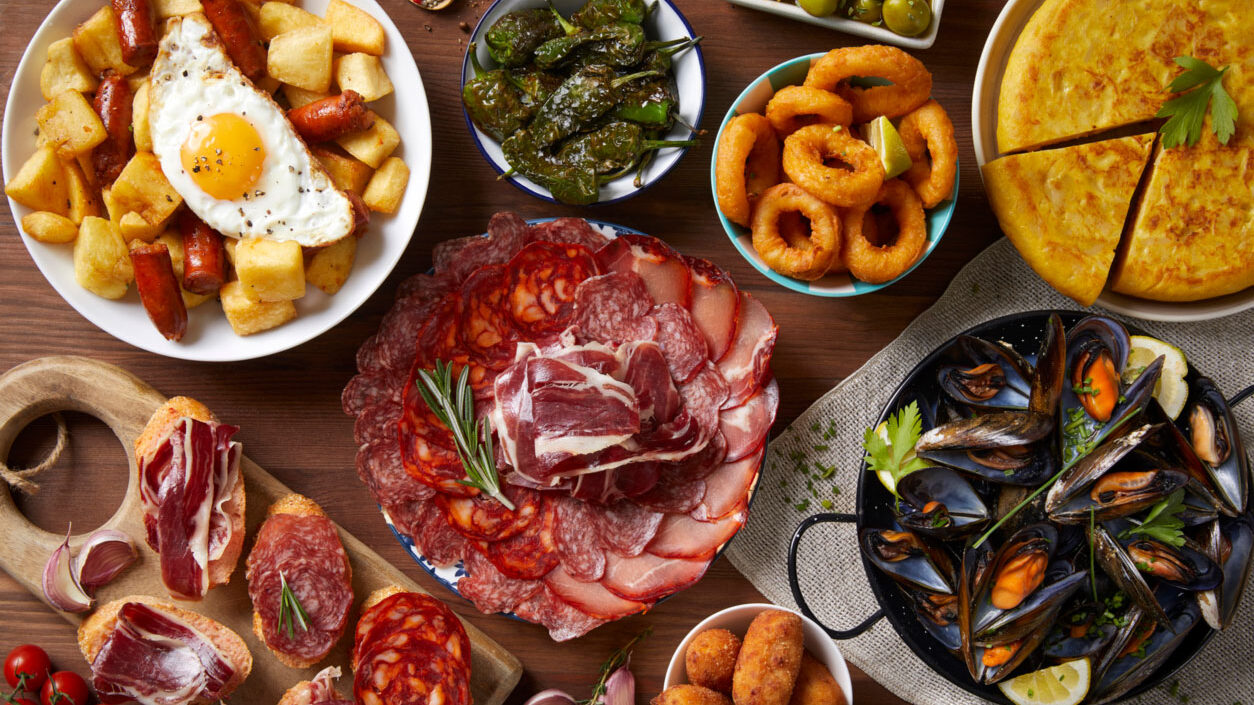2023 Trends in the Restaurant Industry: Food, Beverage and Menus
Throughout 2022, it appeared that the Canadian food service industry had finally returned to“normal”, or at least a new sense of normal in the aftermath of the global pandemic. Pent-up consumer demand led to the strongest traffic numbers since the start of the pandemic, evident through bustling summer patios and busy restaurants. Yet, according to Restaurants Canada’sQ3 2022 Restaurant Outlook Survey over half of respondents indicated guest counts remain below pre-pandemic levels, reporting lower sales compared to 2019 levels.
The Canadian restaurant industry has forever been reshaped by disruptions caused by the pandemic. Endless restaurant closures and reopenings with very little notice, ongoing and widespread labor challenges, highly disruptive supply chain issues and unprecedented inflation resulting in massive food cost increases have all taken a toll on what was already a precarious environment.
Always a resilient creature, the good news is the Canadian restaurant sector is quick to adapt and pivot. As we head into 2023 there needs to be an understanding of what new challenges and opportunities the New Year will bring and how the food industry will respond. What are the upcoming food and beverage trends and menu offerings customers will be looking for? What digital trends can businesses adopt to drive efficiencies? What will customers expect and how will their behaviour impact how restaurants function?
Due to the constantly changing landscape of the food service industry, predicting trends is never easy. Restaurants will have to be more flexible in 2023 than ever before to meet customer demands while at the same time running ultra-efficient operations to support economic recovery. Leveraging insights from Restaurants Canada’s 2022 Food Service Facts Report and 2022 Restaurant Outlook as well as industry experts, we’ve pulled together a three part series on 2023 trends focusing on key topics: Food, Beverage and Menu Trends, Technology Trends and Customer Behaviour.
Food, Beverage and Menu Trends
Without a doubt, in- house dining is back. According to Restaurants Canada 2022 Food Service Facts, the share of Canadians who felt comfortable dining indoors at a full-service restaurant jumped from 48% in 2021 to nearly 90% in 2022 driven mainly by fewer cases of COVID-19 and a sense of wanting to return to normal.

As they return to the table, what are the menu offerings and flavours customers will be looking for? The NRA’s (National Restaurant Association) 17th Annual What’s Hot 2023 Food Trends Report, a survey conducted in partnership with the American Culinary Federation, has identified three key food megatrends: restaurant experiences, local dining and community. Despite the dominance of off-premise restaurant use, the desire for restaurant experiences – socialization, celebration and culinary exploration – is strong. Naturality and sustainability are a focus and regional ingredients will continue to play a large role as customers want to feel better about their consumption habits. Locally sourced foods, comfort foods and plant based dishes will remain popular amongst guests in 2023, yet alongside traditional comfort foods is a robust interest in globally-inspired menu items, a trend referred to as culinary tourism. Foods that promote health and wellness will also be popular, playing a large role in the beverage sector as consumers continue to embrace mindful moderation. In order to reach the modern consumer plate and changing desires, it’s imperative that the food industry pay attention to these emerging trends and preferences as customers remain as hungry for connection as they do for sustenance.
- Comfort Foods and Food Tourism
According to the NRA’s What’s Hot 2023 Food Trends, fried chicken sandwiches and chicken sandwiches 3.0 (spicy and sweet-heat fusion flavours on chicken) will be the top trend of 2023 followed closely by comfort food such as nostalgic classics like burgers and mac and cheese. Due to remote work profoundly disrupting the concept of set meal periods, there will also be a proliferation of hand-held items, bowls, sandwiches and wraps – many 2023 menus will reflect meal solutions to go.
There is also a heavy focus on the use of global condiment sauces, spices and seasonings such as Sriracha variations, Ganjang (Korean Soy Sauce) and Guajillo Chili Sauce.
Three-quarters of Canadian consumers are open to trying new flavours when dining out and creating innovative new menu items with unique tastes should be a consistent focus for restaurants. The top three global trends are predicted to be Southeast Asian (Vietnamese, Singaporean and Philippine), for example Ube – a slightly nutty-tasting vanilla-scented purple yam originating in the Philippines – is showing up on lots of trend lists and in all kinds of foods and drinks, from pies and waffles to lattes and Ube coladas, Caribbean (Puerto Rican, Cuban and Dominican) and South American (Argentinian, Brazilian and Chilean).
As sustainable ingredients continue to be a welcome trend in the restaurant business and as chefs look for new resources to source locally, the humble mushroom will also be a popular menu item for 2023. While Shiitake, Portobello and Cremini are old favorites, 2023 will be the year of specialty mushrooms such as Oyster and Trumpet mushrooms, which will make an appearance particularly in appetizers.
More than just sustainable, studies about mushrooms showcase their benefits for improved sleep, high nutritional value, and even their capacity for enhanced brain function. Findings appeared in the Journal of Alzheimer’s Disease that show people who integrate mushrooms into their diets, even if they only consume them in small portions, appear to have a lower risk of mild cognitive impairment (MCI). Which leads us to the next 2023 trend – using foods to nourish the body and mind.
- Foods that Feed The Mind, Foods as Medicine and Functional Foods
With more and more people experiencing anxiety, consumers are turning to food and beverage choices to improve their mental and emotional well-being. In 2023 we can expect to see a continued focus on stress relief and mood-boosting ingredients, often called functional foods, including the plant-based meat category and new ways to eat fruits and vegetables, for example, incorporating fruits, vegetables and legumes into pantry staples like pasta. Functional foods are ingredients that provide an extra health benefit beyond nutritional value. Some examples include mood-boosting and relaxation snack bar brands or gut-friendly probiotics and prebiotics that are found in fermented foods such as yogurt, sauerkraut, kimchi, and pickles. The interest in functional foods and beverages is high due to the emphasis on immunity in the wake of the pandemic as well as an interest in feel-good foods that help fight depression, ward off dementia and support brain health.
With more and more people experiencing anxiety, consumers are turning to food and beverage choices to improve their mental and emotional well-being. In 2023 we can expect to see a continued focus on stress relief and mood-boosting ingredients, often called functional foods, including the plant-based meat category and new ways to eat fruits and vegetables, for example, incorporating fruits, vegetables and legumes into pantry staples like pasta. Functional foods are ingredients that provide an extra health benefit beyond nutritional value. Some examples include mood-boosting and relaxation snack bar brands or gut-friendly probiotics and prebiotics that are found in fermented foods such as yogurt, sauerkraut, kimchi, and pickles.
The interest in functional foods and beverages is high due to the emphasis on immunity in the wake of the pandemic as well as an interest in feel-good foods that help fight depression, ward off dementia and support brain health.
The Mintel 2023 Global Food and Drink Trends Report highlights brands promoting the brain-boosting benefits of foods and drinks that contain caffeine, magnesium, B vitamins, and zinc. Lion’s mane is the top functional mushroom, and saffron remains the fastest growing herb or spice. Expect to hear a lot about mood boosting botanicals – substances that claim to enhance cognitive functioning – such as L-theanine in green tea, ginseng, ashwagandha, an evergreen shrub that grows in Asia and Africa commonly used for stress, and ginkgo biloba, a plant rich in antioxidants which can help reduce inflammation and may also be beneficial for heart health, brain function, and eye health.
- Beverage Trends and Mindful Moderation
2020 saw alcohol revenues at full service restaurants fall by 38% and by 46% at drinking places according to Restaurants Canada’s Intel 2022 Food Service Facts Report . Ipsos Act Canada reports that while the reopening of licensed establishments led to greater sales in 2022, the share of alcohol occasions consumed from licensed establishments remained well below their pre-pandemic levels. The loosening of restrictions at restaurants has since raised this share, but there is still a long way to go for this market share to regain its lost ground

NRA’s What’s Hot Trend Report predicts the top alcohol beverage of 2023 will be spritzes as well as modern day interpretations of throwback classics such as Mezcal old-fashioneds and gin margaritas. Diners are also experimenting with more indulgent alcohol options, including spicy cocktails like ghost pepper cocktails and espresso martinis, and seeking out avant-garde presentations and interactive elements as part of the drinking experience.
Mindful moderation is a trend that will continue to grow within the food and beverage category boosted by consumers desire to live a healthier lifestyle by moderating their drinking. A correlating category that also continues to rise is the sober-curious movement. While this movement doesn’t mean consumers are cutting out alcohol altogether, reducing intake is a trend scene across the generations. Because of this people need viable alternatives to alcohol and restaurants will need to start offering more creative non-alcoholic choices, leveraging the influx of non-alcoholic wine, beer and ready to drink (RTD) options as well as in house concoctions.
In the non-alcoholic category there will be a focus on oat, nut or seed milks, an extension of the plant-based trend, as well as cold brew innovations. Favored cold brews, cold brews with toppings and nitro coffees will continue to be a trend, fueled mainly by the QSR (Quick Service Restaurant) category. Expanding on the functional food trend and as consumers look to reduce sugar intake levels and support better immunity and digestion, functional water – water that contains healthy additives such as botanicals, vitamins, internals and oxygen – will also be big.
- Menu Engineering (menu img)
One of the big unknowns heading into 2023 is menu prices. According to Restaurants Canada Q3 2022 Outlook Survey menu prices are forecast to be roughly 6% higher in 2023 than in 2022. Consumers may be returning, but they still need a diverse set of reasons to dine out and affordability is one of them as the food crisis continues and everyone is looking for ways to save.
Restaurant owners have always worked to keep menu prices in acceptable territory, but as food prices continue to rise and labour challenges mount, managing menu complexity and supply chain costs will continue to be crucial to maintaining margins. Menu engineering – a framework to evaluate and optimize restaurant menu pricing and design to create a more profitable menu and business overall – will be a necessity for restaurant owners throughout 2023.
Successful operators can address rising food costs multiple ways. Creative and strategic sourcing of products to leverage underutilized ingredients in the supply chain and having a laser focus on waste will be key, as well as menu streamlining and simplification. Reducing menu items will assist with food inventory management challenges and investing in smart kitchen technology such as sous-vide machines will reduce prep time and minimize food waste. There’s also an opportunity for chefs to experiment with lower cost food items and with the right cooking preparation methods, transform them into crave-worthy and desirable dishes to help drive value perception

Transparency will also be important. Restaurant owners can arm servers with the right talking points about the menu and continually monitor customers’ reaction because how these increases are communicated to customers will matter. 2023 is the year to showcase local suppliers and share the story of the people growing the food that is being served. Explaining to the customer that they are not just supporting the restaurant but also the entire Canadian supply chain may result in less opposition to higher menu prices.
But by far, the best thing a restaurant can do to help offset sensitivity to menu pricing when welcoming customers back is to ensure their experience is unforgettable. Encourage staff to use the menu as a story-telling tool and focus on the positive and the exciting new offerings that will help folks remember what they appreciate in dining experiences.
2022 has demonstrated increased customers confidence in returning back to bars and restaurants and that confidence is forecast to continue into 2023. While it’s clear that there is no one size fits all solution for the future of the restaurant industry, creating variety and options that ultimately speak to consumers is a good place to start. Paying attention to the foodservice trends that affect the restaurant business is one of the best ways to meet customers’ needs and stay competitive. While 2022 was still a year of recovery, 2023 is the year to reset, revive and redefine the food industry, taking advantage of opportunities for innovation, creation and change.









